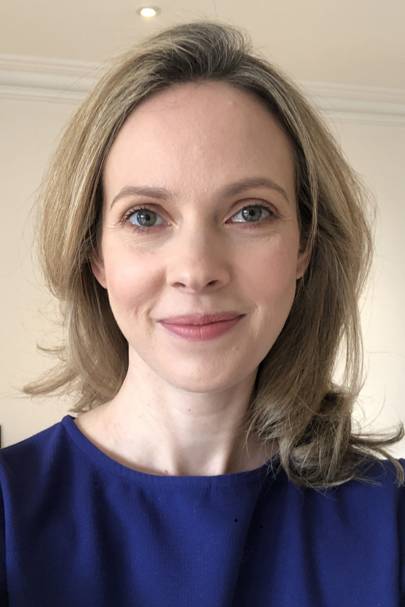While the large majority of us may feel as though we’ve focussed more on our health over the last few months than perhaps ever before, there is huge concern amongst medical professionals that the outbreak of the Coronavirus pandemic and well-being vigilance has actually been significantly detrimental to our overall health.
Sure, you’ve been keeping an eye on your temperature, how often you’ve been coughing and whether you can taste or smell as well as you could yesterday – not to mention wearing face coverings in public and avoiding any potential spreading of germs – but have you been keeping as good an eye on yourself as you think?
How many times have you checked your boobs over the last few months?
Did you think it was safer to avoid the GP surgery than get your smear test?
How about your skin? Have you been working from the garden and laughed off the need for suncream? “It’s England!”. And have you been checking your moles as regularly as we all know you should?
We may feel as though we’ve been super health-conscious over the last few months, but the Covid outbreak has actually seen a huge majority of us neglect all the many other parts of our bodies that need keeping in check.
Whether we’ve convinced ourselves that the doctors “have enough to deal with right now” or we have simply been too afraid to enter a medical environment with other sick people, Cancer Research recently revealed that just ten weeks into the pandemic there were over 2 million people in the UK waiting for cancer screening, tests and treatments.
Despite leading doctors urging people not to delay seeking help, it’s been reported that nearly half of the public have concerns about seeking help during the pandemic, and at least one in ten people would not contact their GP even if they had a lump or a new mole which did not go away after a week.
Pre-Covid there had been an alarming rise in skin cancer diagnosis in the UK. With so many people now avoiding checks altogether, it looks likely that the numbers are set to soar in the coming months.
It is so important that we take a vigilant approach to both sun protection and mole awareness, which means regular mole checks.
Of course, just because you have moles doesn’t automatically mean you must visit a professional. The ‘ABCDE Rule’ is the most commonly-cited tool for an at-home mole check, and is supposedly the most effective at identifying superficial spreading melanomas (the most dangerous form of skin cancer).
It’s important to remember that a melanoma does not always fit the ABCDE rule. If you notice anything that feels unusual, or if there is a new skin lesion, if it itches/bleeds or if you are worried about it, it’s always a good idea to seek medical help.
The ABCDE Rule
- A – Asymmetry: Does one half of the mole not match the other?
- B – Border: Check the outline of your mole – a melanoma may have edges that are ragged, notched, blurred or irregular. The pigment may also have spread into surrounding skin.
- C – Colour: Is the colour uneven? You might see different shades of black, brown and tan, or areas of white grey, red, pink or blue.
- D – Diameter: Do you see a change in the size of your mole? Has it increased? Typically, melanomas are at least 6mm in diameter (the same size as the end of a pencil).
- E – Evolving: Does it look different from your other moles and/or is changing in size, colour or shape?
If you have any concerns having completed an ABCDE check, it’s wise to book in with a professional as soon as you can – not only to ensure it is given any appropriate treatment as soon as possible, but also to rest your mind.
Mole Mapping at The Cadogan Clinic
Mole Check at the Cadogan Clinic on Sloane Street is the UK’s most comprehensive service for screening, diagnosing and treating skin cancer.
Having had my first check-up two years ago, I returned earlier this year for a second.
As the only mole check of its kind to be approved by the British Skin Foundation, it is also the only service in the UK that is Consultant Dermatologist-led, providing rapid results as well as thorough advice and the very best patient care.

The Cadogan Clinic on Sloane Street
Cadogan Clinic’s comprehensive Mole & Lesion Check includes whole body mole mapping which has been proven to improve accuracy when diagnosing malignant melanoma, allowing earlier detection of skin cancers and a reduction in unnecessary skin excisions.
The service takes just 30 minutes and provides a comprehensive, computer controlled Mole Map (via photography) of the entire body – which every patient can take home – enabling the subtlest changes in a mole’s appearance to be tracked over time.
Consultant Dermatologist Dr Catherine Borysiewicz was able to bring up the images taken of each of my moles during my previous visit and compare every single one (I have a significant number) to its current appearance in an unbelievably thorough monitoring process.
The Mole Mapping service can track changes both externally as well as internally using Dermoscopy, to detect changes which are not visible to the naked eye.
Why opt for a Mole Check at the Cadogan Clinic?
- Dermatologist Led: Every patient is seen by a Consultant Dermatologist (not a general nurse).
- Mole Map: Every patient leaves with a comprehensive computer controlled Mole Map of their entire body.
- Long Term Monitoring: Mole Mapping technology allows doctors to spot even the subtlest of changes to moles over time.
- Dermoscopy: Any mole that a Dermatologist is concerned about will be examined on the spot under a high powered dermatology microscope.
- Treatment: There are three fully-staffed operating theatres on site for the rapid, same-day removal of worrisome moles.
- Plastic Surgeons: For the removal of bigger/deeper moles – or those in more visible places – a Consultant Plastic Surgeon can undertake the procedure to minimise any risk of scarring.
- Mohs: One of the only clinics in the UK to offer Mohs surgery (a precise surgical technique used to treat skin cancer) on site. This is recognised by NICE as the optimal approach to skin cancer removal.

Dr Catherine Borysiewicz, Consultant Dermatologist at The Cadogan Clinic
For sun safety, Dr Catherine Borysiewicz recommends
- Apply SPF 50+ sunscreen – the higher SPF the better, as studies have shown that on average people will apply less than half the amount of sunscreen required to provide the level of protection on the packaging.
- Don’t forget to apply to commonly-missed sites – back, neck and ears.
- Reapply regularly throughout the day and do not trust claims of ‘once a day application’ products
- Limit your exposure to UV by avoiding 11am-3pm peak hours of the day.
Visit the Cadogan Clinic at cadoganclinic.com
